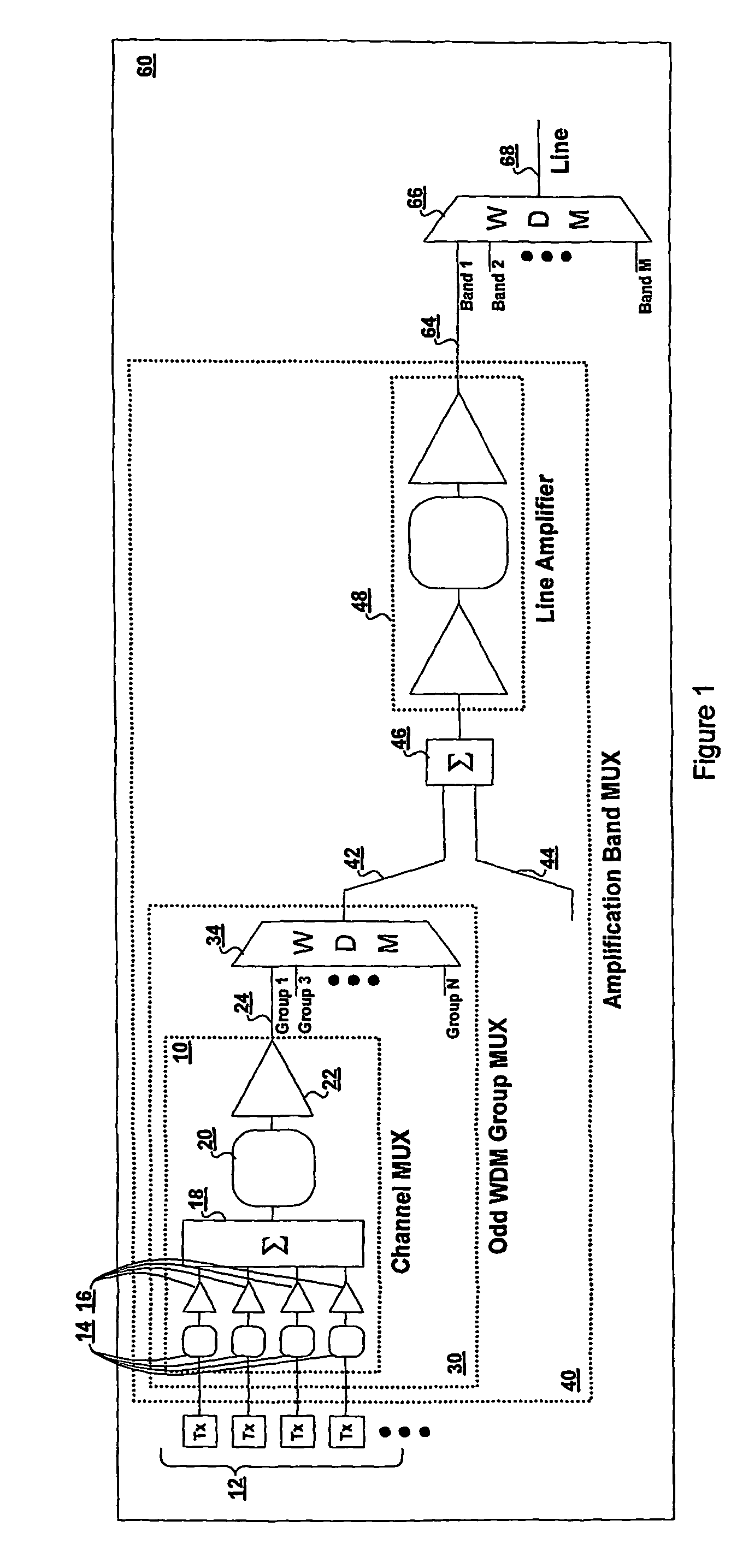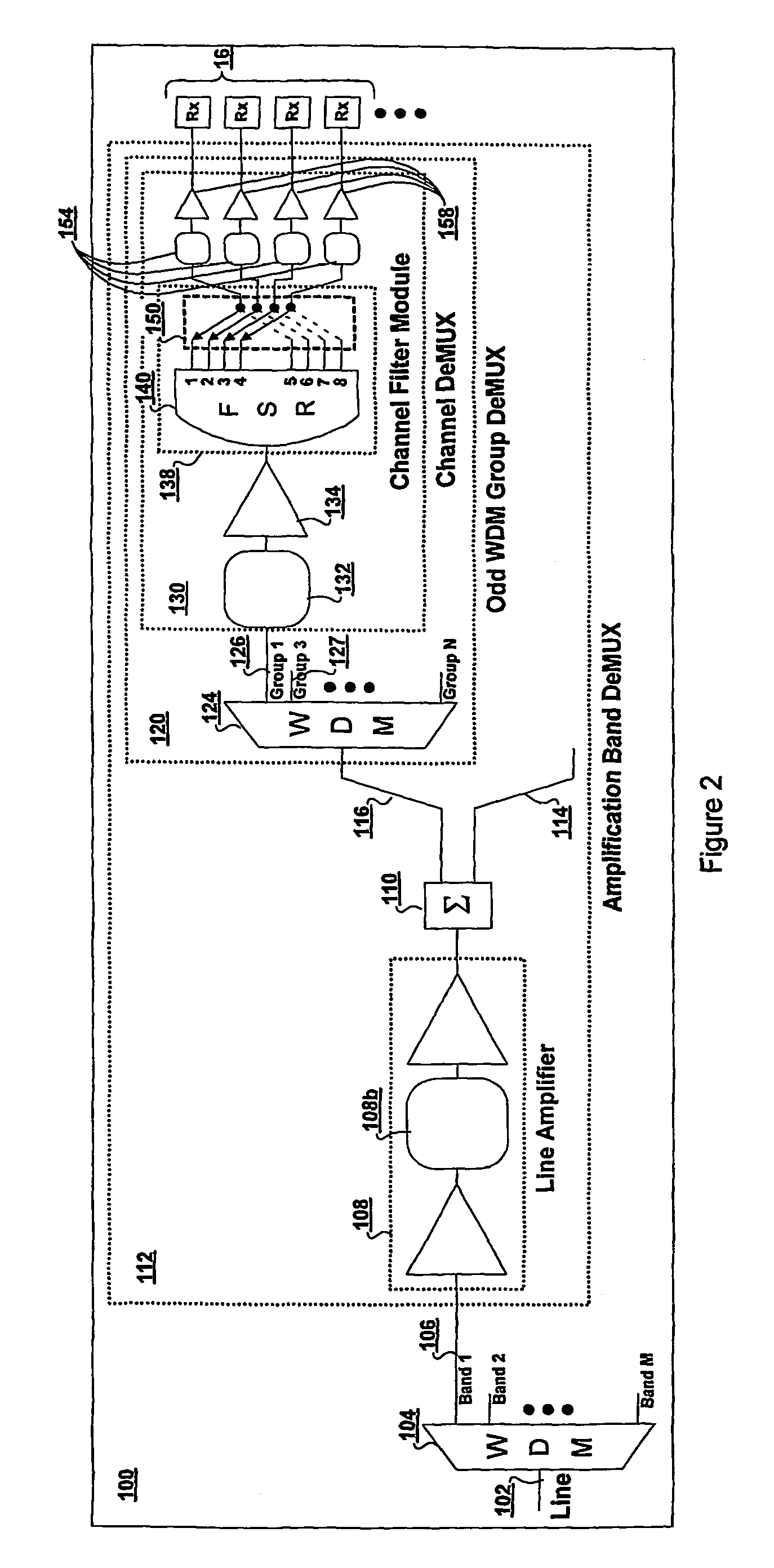High spectral efficiency, high performance optical MUX and DEMUX architecture
a technology of optical mux and demux, which is applied in the direction of multiplex communication, instruments, optical elements, etc., can solve the problems of reducing the spectral efficiency of the system, requiring small bandwidth of filters, and requiring smaller channel spacing, so as to achieve high spectral efficiency and reduce cost and complexity. , the effect of high spectral efficiency
- Summary
- Abstract
- Description
- Claims
- Application Information
AI Technical Summary
Benefits of technology
Problems solved by technology
Method used
Image
Examples
second embodiment
[0040]A motivation underlying the present invention is to provide MUX and DeMUX functions for bands of wavelengths suitable for optical amplification in a fiber optic communication system while maximizing system performance and reach. In this respect, a multiple band system can be realized by replicating the soon-to-be described MUX and DeMUX architecture for each band independently. In general, the MUX and DeMUX architectures of the present invention will fall into two key sections: a wavelength group section and a channel section. In the wavelength group section, groups of multiplexed channels are separated from an from an optical signal having a plurality of multiplexed groups. These groups of multiplexed channels have an associated characteristic for separating said groups. In one embodiment of the invention, this characteristic is characteristic for separating groups comprises alternating groupings of odd or even parity. In a second embodiment, said characteristic for separatin...
first embodiment
[0041]FIG. 1 is a schematic drawing showing the architecture of an optical multiplexer (MUX) 60 according to the present invention. The multiplexer 60 consists of several stages: a Channel Mux 10, an odd WDM group MUX 30 and an amplification band MUX 40, each stage having been designed with a specific purpose in mind. At the input side, a plurality of transmitters TX is assumed each providing an optical signal on a unique wavelength channel.
[0042]In FIG. 1, a subset of the plurality of transmitters Tx forms a first WDM group 12 (in this case, 4 channels per WDM group) which feeds through a set of dispersion compensation elements 14 and a set of single channel amplifiers 16 and into a passive combiner 18. The output of the combiner 18 is connected to a WDM group dispersion compensation element 20 which then feeds into a WDM group amplifier 22. This arrangement of elements constitutes a first Channel Mux stage 10 of the optical MUX architecture. Generally, in any practical system, the...
PUM
 Login to View More
Login to View More Abstract
Description
Claims
Application Information
 Login to View More
Login to View More - R&D
- Intellectual Property
- Life Sciences
- Materials
- Tech Scout
- Unparalleled Data Quality
- Higher Quality Content
- 60% Fewer Hallucinations
Browse by: Latest US Patents, China's latest patents, Technical Efficacy Thesaurus, Application Domain, Technology Topic, Popular Technical Reports.
© 2025 PatSnap. All rights reserved.Legal|Privacy policy|Modern Slavery Act Transparency Statement|Sitemap|About US| Contact US: help@patsnap.com



